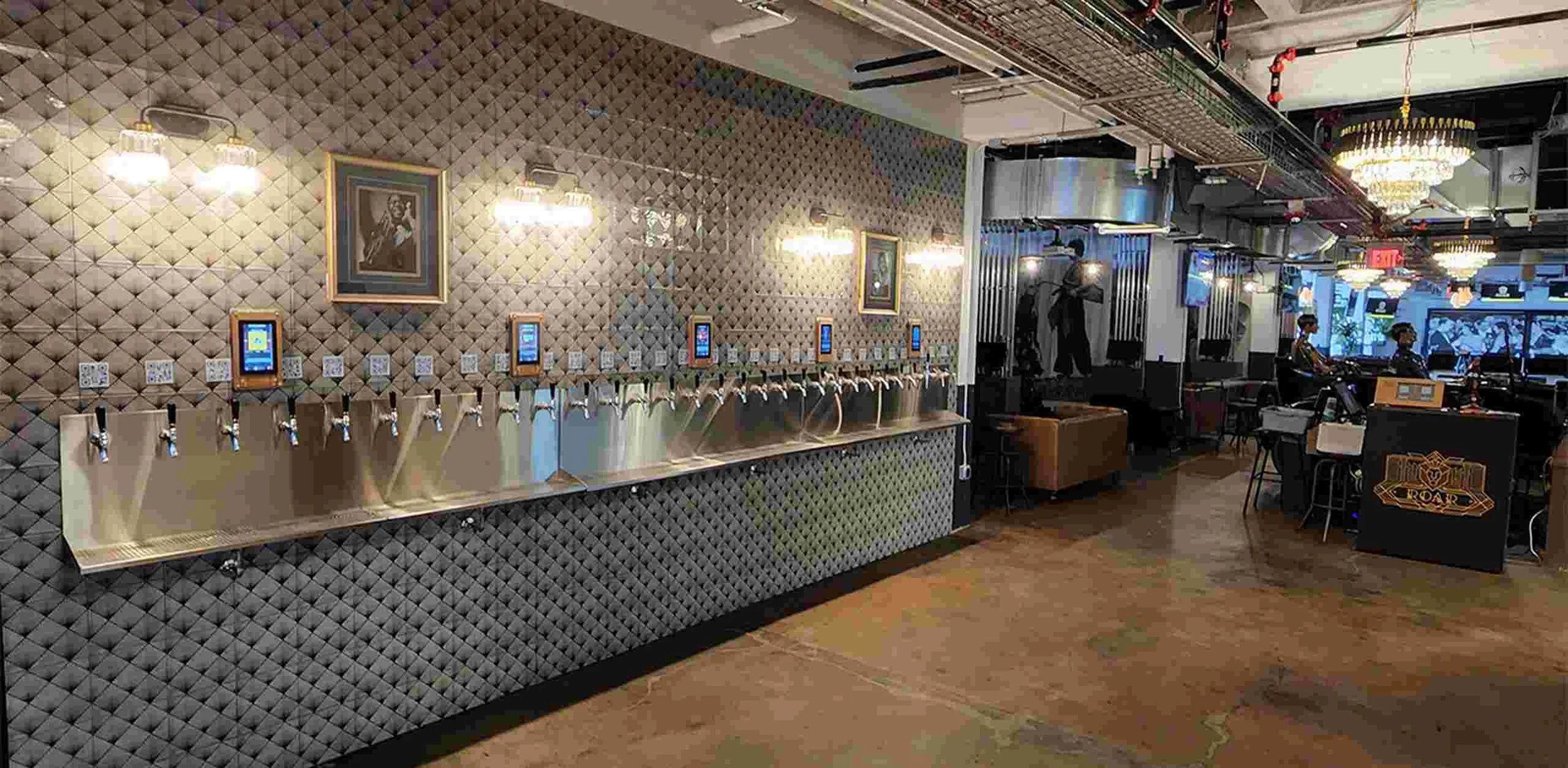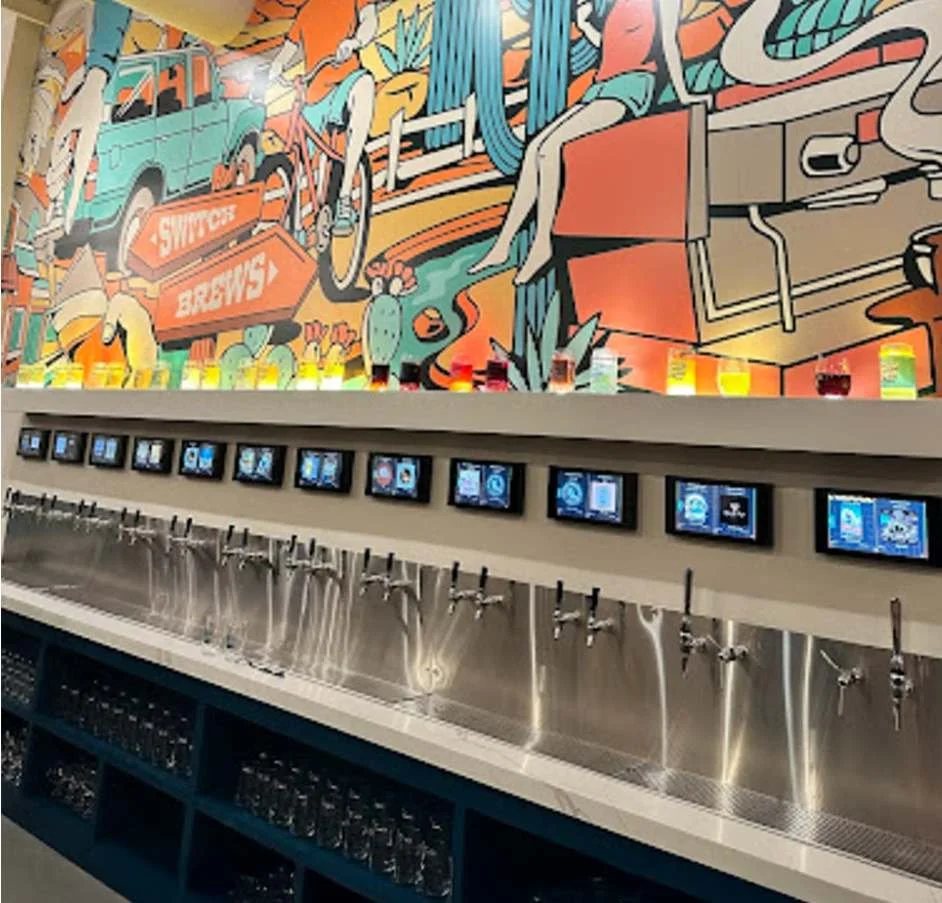Upgrading Your Beverage Service: Why Draft Beer Beats Bottles And Cans With Tap Wall Installation
In recent years, draft beer has surged in popularity, becoming the go-to choice for beer lovers in bars, restaurants, and homes. Its appeal lies in the refreshing taste and vibrant flavor, often superior to bottles and cans. With the rise of craft breweries and a growing variety of beverages, establishments are seeking ways to enhance their beer service. One of the most innovative solutions is installing a tap wall system, which allows bars to offer a range of draft beer options while ensuring freshness and efficiency. This system gives customers control over their pours and elevates the overall experience. This article explores the benefits of switching to draft beer and why a draft system with a tap wall is a superior choice for businesses aiming to offer a premium beer experience.
What Is Draft Beer?
Draft beer, also known as draught beer, is stored in kegs and served directly from a tap, rather than from bottles or cans. This method of storage and dispensing helps maintain the beer’s freshness, carbonation, and overall quality. Since draft beer is kept in a controlled environment, it avoids exposure to light and air, which can affect the taste and spoil the beer more quickly. Many beer enthusiasts prefer draft beer because it often has a smoother mouthfeel, a richer flavor, and a fresher taste compared to its bottled and canned counterparts.
Draft Beer: The Premium Experience
Draft beer offers a truly premium experience that sets it apart from bottled and canned options. The primary appeal of draft beer lies in its freshness—beer poured directly from a keg is generally fresher and retains more of its natural flavor and taste. Unlike bottled or canned beer, which can be affected by light and air, draft beer is served in an optimal environment, ensuring that each pour is as close to the brewery’s intended experience as possible.
Some of the standout benefits of draft beer include:
- Freshness: Beer poured from a keg is less likely to be exposed to the factors that cause it to lose its crispness, like light and air. This results in a fresher, more vibrant taste.
- Quality: Draft beer typically maintains its carbonation and is poured under optimal pressure, giving it a smoother mouthfeel and a more consistent taste compared to beer in bottles or cans.
- Flavor: The freshness of draft beer enhances the flavors, making it a superior option for those who want to experience the full range of tastes, especially in craft beers that rely on unique ingredients and brewing methods.
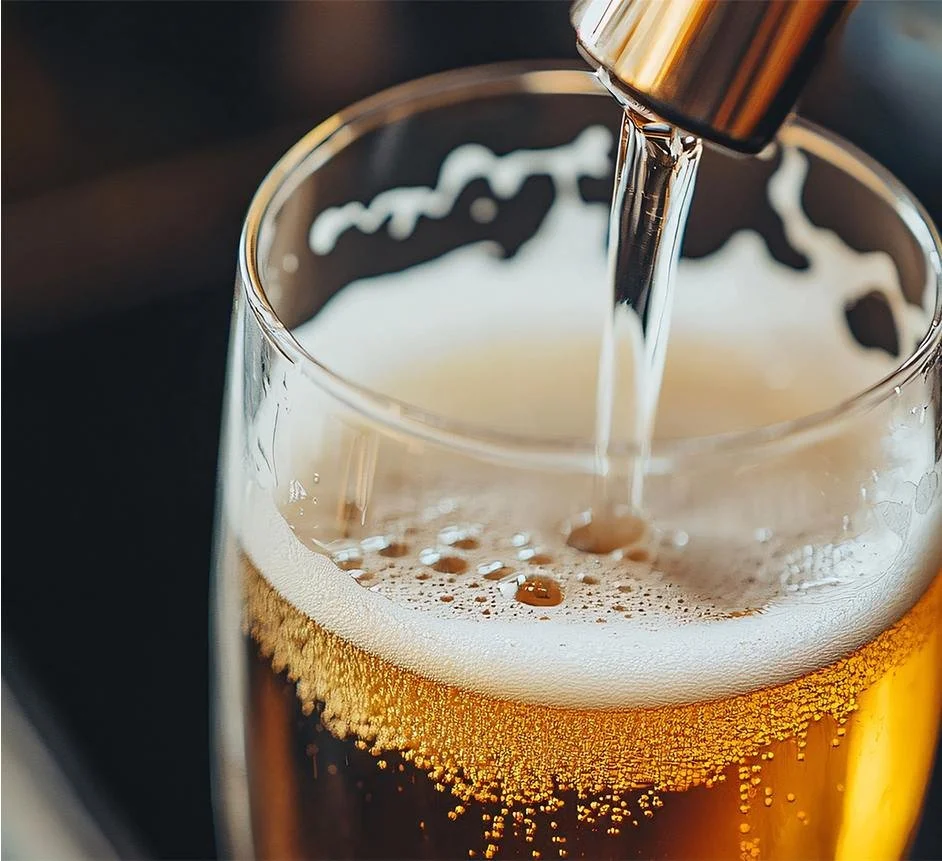
Draft beer offers a unique drinking experience that bottled and canned beers can’t match. Customers enjoy the spectacle of beer poured fresh from the tap, and the wide variety available on a tap wall system adds excitement and choice that bottles and cans can’t replicate. The ability to serve different styles of beer on tap makes the beverage experience more dynamic and engaging.
Additionally, switching to draft beer significantly reduces environmental impact. Kegs are reusable, eliminating the need for individual bottles and cans, which often end up in landfills. This shift promotes more sustainable practices in the beverage industry, benefiting both the environment and businesses looking to reduce their carbon footprint.
Draft System: How It Works
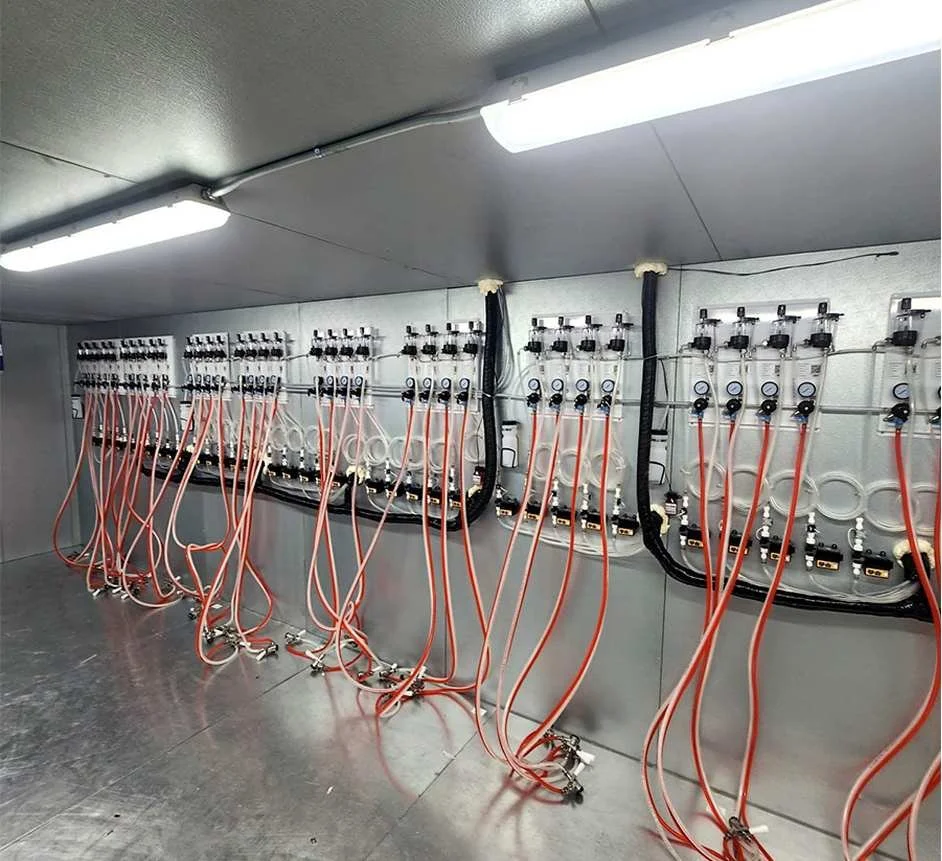
A draft system is the heart of serving fresh draft beer, providing a seamless process to deliver beer from a keg directly to the glass. This system relies on key components to ensure that each pour is fresh, high-quality, and maintains the perfect taste and flavor. Let’s break down the basic components of a draft system:
- Kegs: Kegs are large, pressurized containers that store the beer. Unlike bottles or cans, which are often sealed with preservatives or exposed to light, beer in a keg is kept in optimal conditions to preserve freshness.
- Tap Lines: These are the hoses that connect the keg to the taps. Tap lines carry the beer from the keg to the pouring faucet, ensuring it flows smoothly and without contamination.
- Regulators: These devices control the pressure within the draft system. The pressure helps push the beer from the keg to the tap and ensures that the beer maintains the right carbonation level during the pour.
- Taps: The taps are where the beer is poured into the glass. Depending on the system, they can be manual or part of a more advanced self-pour system that allows customers to pour their beer.
The process of getting beer from the keg to the glass is simple but crucial to maintaining its quality. When a customer orders a beer, the keg is pressurized by the regulator, pushing the beer through the tap lines and out of the tap. The beer is poured into the glass at a precise angle to preserve the right amount of foam and minimize waste. This system ensures the fresh taste of the beer by minimizing exposure to air and light, which can compromise the quality of bottled or canned beer.
A draft system also regulates the temperature and carbonation of the beer. Proper temperature control ensures the beer is served at its ideal drinking temperature, enhancing the flavor and taste. Most draft systems include cooling mechanisms to maintain a consistent temperature while managing carbonation levels to prevent excessive foam or flat pours. By controlling these factors, a draft system preserves the beer's flavor, delivering a consistently fresh and high-quality experience for customers.
Self Pour Systems: Empowering Customers
A self-pour system is a modern innovation that allows customers to serve themselves draft beer directly from the tap, often through a tap wall installation. We recommend using iPourIt for its superior self-serve technology. Their systems use advanced RFID technology that integrates seamlessly with draft systems, giving customers the ability to pour their beer with ease and precision. With self-pour systems, bars can offer a wide selection of draft beer options while allowing customers to control their drinking experience, making it an exciting addition to any establishment.
Self-pour systems bring numerous benefits to customers:
- Increased Convenience: Customers no longer have to wait for a bartender to serve them; they can simply approach the tap wall and pour their beer at their leisure.
- Choice and Variety: Self-pour systems often feature multiple taps with a diverse range of beverages available, allowing customers to try different styles of beer without committing to a full pint of any one option. This enhances the experience by offering a wide selection of draft beer.
- Control Over Pour Size: Customers have the freedom to choose their pour size, whether it’s a small sample or a full pint. This added control allows beer lovers to try more options without wasting beer or feeling pressured to commit to a large serving.
Self-pour systems increase efficiency in bars and restaurants by allowing customers to control their pours. This frees up bartenders to focus on other tasks, reducing wait times and enabling faster service. Additionally, self-pour systems help reduce waste by ensuring customers pour only what they want, eliminating over-pouring and unnecessary waste associated with bottles and cans.
Another benefit of self-pour systems is the novelty they add to the customer experience. Serving themselves from a high-tech tap wall creates a fun and interactive experience that attracts a younger, tech-savvy crowd. This trend is becoming increasingly popular in modern bars, breweries, and restaurants, enhancing the atmosphere and making customers feel more engaged with the process of pouring and enjoying their draft beer.
Benefits Of Tap Wall Installation
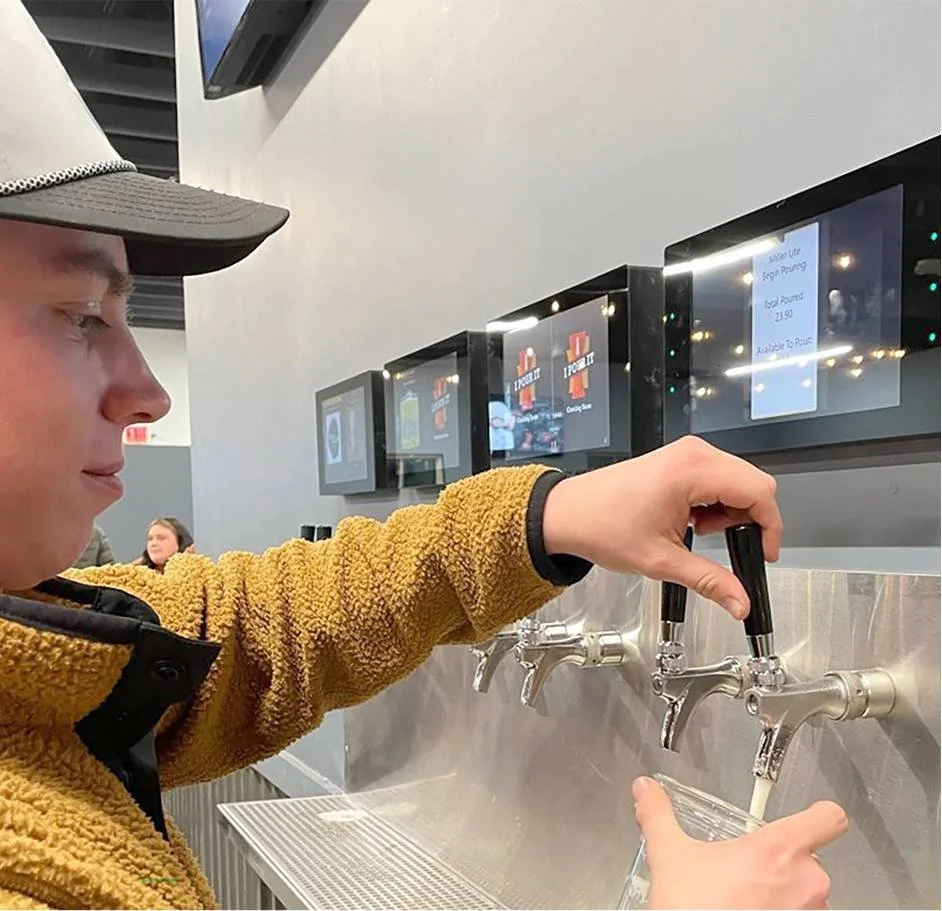
Tap wall installations offer significant advantages for bars and restaurants, enhancing both beverage service and the customer experience. These systems improve efficiency and organization while providing space-saving benefits, making them ideal for establishments with limited room or a desire to maximize floor space.
- Space-Saving Advantages: Tap walls optimize space by consolidating multiple taps into a single, vertical installation, freeing up valuable counter space. This allows bars to offer a wide selection of draft beer without crowding the bar area, making it especially beneficial in smaller or busy venues where maximizing seating and customer space is essential.
- Customization: A tap wall system makes it easy to rotate beer selections, allowing bars to feature seasonal brews, craft beers, or limited-edition options. This flexibility keeps the beverages fresh and exciting for both regular and new customers, offering variety and keeping the experience dynamic.
- Aesthetic Appeal: Beyond functionality, tap walls add aesthetic value, enhancing the ambiance of an establishment. Customizable in materials, colors, and layout, tap walls can match the interior design, from sleek stainless steel to rustic wooden accents, making them a focal point that elevates the overall atmosphere and customer experience.
The use of a tap wall system can lead to significant cost savings by improving efficiency and optimizing pour management. With precise control over each pour, tap walls minimize over-pouring and reduce beer waste.
Cost Savings: A draft system allows bars to serve more customers while ensuring accurate pours, minimizing excessive foam and waste. Self-pour systems eliminate over-pouring, as customers control the amount they pour, leading to better beer management. This reduces the need for purchasing, storing, and disposing of bottles and cans. Additionally, fewer broken bottles and less wasted draft beer contribute to overall cost savings for the business.
Comparing Draft Beer With Bottles And Cans
When it comes to enjoying beer, the method of delivery significantly impacts the overall experience. Draft beer consistently stands out as the superior choice over bottles and cans. Below, we explore why draft beer offers better taste, is more cost-effective, and has a lower environmental impact compared to bottled and canned options.
Taste: Draft beer is stored in kegs and poured directly from the tap, which helps maintain its ideal temperature, carbonation, and flavor. Unlike bottles and cans, which can be affected by light, air, and temperature fluctuations, draft beer is kept in a controlled environment, preserving its freshness. As a result, it often tastes crisper and more vibrant, offering a fuller flavor profile. The direct pouring from the tap also ensures a smoother and more consistent pour, enhancing the drinking experience.
Cost: While bottles and cans may seem convenient, draft beer can be more economical in the long run. Kegs hold more beer than individual bottles or cans, allowing bars to serve larger quantities at a lower cost per ounce. Additionally, purchasing draft beer in bulk reduces packaging costs, as kegs don’t require individual labels, bottles, or cans, making it a more cost-effective solution for high-volume establishments.
Environmental Impact: Draft beer also has a clear environmental advantage. Kegs are reusable and can be refilled multiple times, significantly reducing waste compared to bottles and cans, which often end up in landfills. Opting for a draft system with kegs, bars, and restaurants can help minimize their environmental footprint and reduce packaging waste. Many businesses are also adopting self-pour systems with tap walls, allowing customers to pour their beer and further reducing waste from over-pouring or unused portions.
Upgrading to a draft system with a tap wall offers numerous benefits, including fresher draft beer with superior taste and flavor, cost savings through the use of kegs instead of bottles or cans, and a reduced environmental impact. Tap walls allow for easy customization, offering rotating beer selections and seasonal options, while self-pour systems give customers control over their pour size, improving efficiency and satisfaction. This innovative technology not only enhances the overall beverage experience but also streamlines service in bars and restaurants. For both businesses and consumers, upgrading to a draft system provides a fresh, sustainable, and cost-effective way to enjoy high-quality beer.
